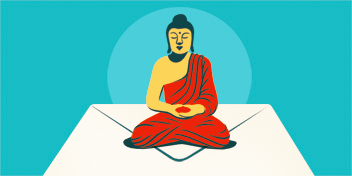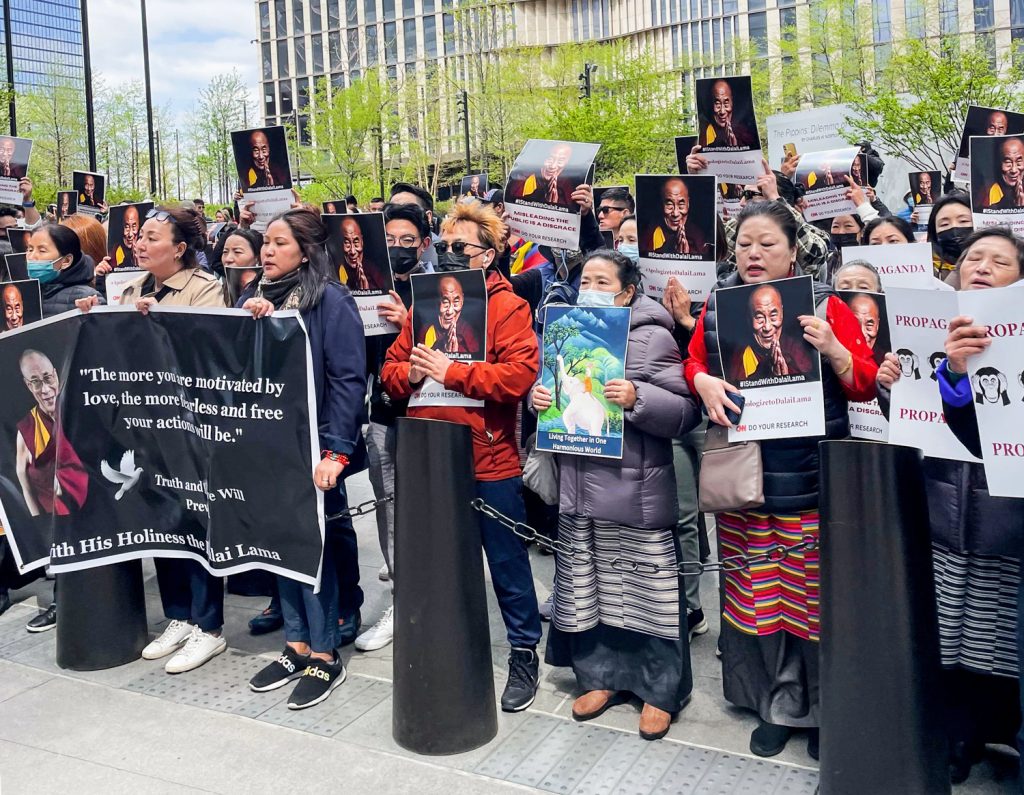On the morning of Wednesday, April 19, upward of 400 Tibetans congregated for a “Truth Rally” outside CNN’s New York City offices. They were demanding a public apology from CNN to His Holiness the Dalai Lama and the Tibetan people for what they argue was misleading reporting of a good-natured interaction with a young boy at the Dalai Lama’s temple in Dharamsala, India, in February. Detailing their grievances on an information sheet that was distributed at the rally, protesters asserted that CNN misled the public by airing only a heavily edited video clip of the interaction, failing to examine cultural context, and excluding crucial facts and informed voices in the conversation—namely the voices of Tibetans.
On April 10, CNN broadcast a television report headlined, “Dalai Lama Apologizes After Video Goes Viral: Clip shows spiritual leader asking boy to ‘suck his tongue.’” CNN anchor Julia Chatterley introduced the clip by pointing to the tension between the “outrage” across the internet and the widely-held view of the Dalai Lama as a “joker.” CNN reporter Vedika Sud then emphasized the “‘severe backlash” against the Dalai Lama that had spread on social media since the viral clip emerged. She read the response from the Dalai Lama’s office and called attention to the office apologizing for his words, not his actions. She added, “Clearly for a lot of people across social media this is more than just teasing. It has upset huge sections of people on social media, on Twitter, that have called it, like I said, absolutely disappointing, absolutely disturbing, and absolutely inappropriate behavior by the Tibetan spiritual leader, the Dalai Lama.”
A collective of four Tibetans organized the protest in response: Dr. Tenzin Mingyur Paldron, a trans artist and educator; Chemi Youdon, the founder of a nonprofit Tibetan nanny agency; Tenying Yangsel, a housing justice organizer; and Chonyi Gyatso, a youth educator. Their overlapping experience in trauma-informed education, intersectional activism, and youth empowerment converged at the common place of providing resources and accessible tools to the community and media.
Tibetans of all ages and ideological backgrounds traveled from their offices in Manhattan, homes in Jackson Heights, Queens, and school drop-offs around the city to protest the damage they said established news outlets like CNN inflicted on their community. They gathered in song, prayer, and chants, declaring that the “truth would come out.” Most people held one of three protest signs: the white dove, symbolizing peace; Four Harmonious Friends (Tib. Thunba Punshi), symbolic of living harmoniously; or the three wise monkeys to communicate the teachings of right speech to the media.
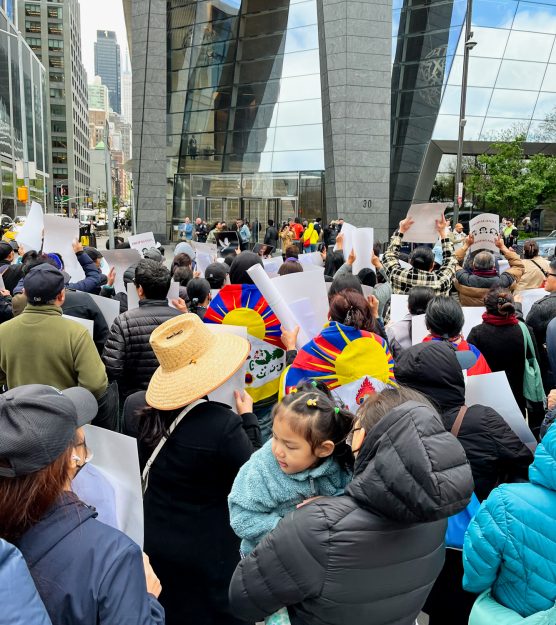
An organizing principle of the demonstration was a request for global accountability for disregarding the voices of Tibetans, a community that has endured genocide and continues to experience colonization and exile.
“We’re asking people to listen to us, and people are choosing not to listen to an entire community,” said organizer Chonyi Gyatso.
According to the organizers, Tibetans have experienced increased acts of daily discrimination and hate speech since the April 10 report. “The media has caused an extreme amount of pain to our community, and it’s at a daily level,” said youth educator Tseten Tsering. “There are kids in New York City having to sit in classrooms hearing terrible and vilifying comments about His Holiness.”
“What happened to cultural sensitivity? What happened to talking?” Paldron asked. “This video came from the Tibetan community. The journalists could have asked more questions to the Tibetan community. What makes them believe they don’t have to interview a single person from that community to know what happened?”
In its address to CNN, the group provided resources mapping its stance on how the media participated in the misrepresentation of the Tibetan people and His Holiness the Dalai Lama. These resources include:
- Voice of Tibet’s post-event interviews with Dr. Payal Kanodia (a trustee of the Indian M3M Foundation, the philanthropic arm of the real estate company M3M Group) and her child on YouTube and Instagram
- Radio Free Asia’s post-event interview with the child and his grandfather, Basant Bansal, M3M chair
- The unedited video of the interaction with cultural context provided by Jigme Ugen, a Tibetan American (unedited video starts at the 15-minute, 15-second mark)
- A video of respected educator and engineer Sonam Wangchuk of Ladakh, India (“Ice Stupa Project”) explaining the cultural context of the interaction
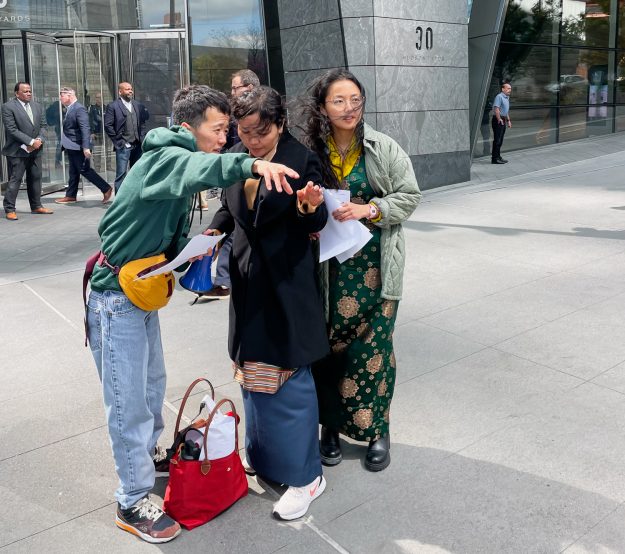
Younger protesters considered the demonstration an opportune time to renegotiate their relationship with the Western world, which upholds the dominant narrative on Tibet and the Tibetan people. A student who wished to go unnamed said that the current Tibetan experience is widely misunderstood thanks to “static” portrayals of Tibet that have created “damaging, unrealistic expectations” of the Tibetan people in popular culture. She and other protesters feel that the media imposes a one-dimensionality on their contested identity as exiled people. “I encourage Tibetans to consider the harm of these outside characterizations and reflect on the power dynamics at hand,” an environmental educator named Yuthok added.
A Tibetan Equality Project member who also wished to go unnamed stressed: “We are a diverse people. We all have different perspectives on different issues. We’re not one single hive mind, right? We all have different ways of thinking, and they might clash with each other. But if there’s one thing to say, it’s that this issue is so upsetting in its lack of nuance that people from all ideological backgrounds within the Tibetan community have come together and unified.”
The controversy surrounding the Dalai Lama is informed by perpetuated histories of Orientalism, argued some protesters. “No one would care if people didn’t have such high expectations of what Tibet is,” the Tibetan Equality Project member attested. “His position in the public eye doesn’t allow him the space to exist in his humanity. I feel like a lot of the West think of him as some sort of higher deity or being and that’s why their expectations are so high. He’s a human being and he’s an old human being.”
Protesters emphasized that Tibetans’ affinity toward the Dalai Lama varies across generations. Many shared how the Dalai Lama’s central position in the Tibetan cultural landscape feels like a “familial bed of comfort and safety” for Tibetans across the diaspora whose nationless identity is shaped by fractured narratives of home.
Still, “a lot of people think that the Tibetans have blind faith in the Dalai Lama, and it’s insulting because [they’re] saying that an entire people are not thinking critically for themselves,” remarked organizer Chonyi Gyatso. “It’s an insult to our intelligence, and I’m pretty sure that’s racist.”
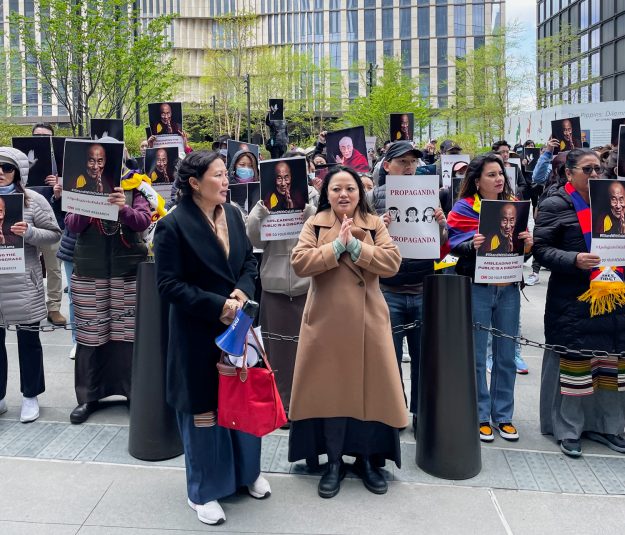
However Tibetans regard His Holiness, protesters made clear that the outsized recognition of the Dalai Lama across the rest of the world as synonymous with Tibet means that any attack on him is deeply felt. As Chonyi Gyatso put it, “When people are talking negatively about the Dalai Lama, it does feel like an attack on me being Tibetan.”
Although most Tibetans at the Truth Rally had spent the week “crying, sleepless, with loss of appetite,” as organizer Chemi Youdon described it, protesters spoke to the palpable sense of unity and relief to be in community, even as passersby yelled slurs from across the street.
“Seeing everyone come together this early in the morning, in the cold, is inspiring. My heart feels lighter after having the space to let out what I was holding inside, including all the frustration,” Yuthok said.
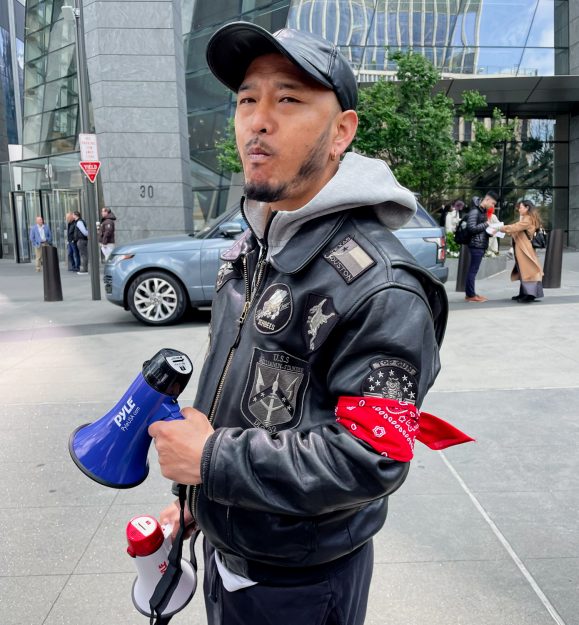
Throughout the three-hour demonstration, ten self-elected community members sported red bandanas on their sleeves to spotlight their role as community stewards, directing traffic across the busy intersection and translating across cultural and linguistic barriers. Others distributed snacks and water bottles between the clusters of young children, elders, and domestic workers, largely nannies, attending the rally. Everyone else was singing in harmony to the Words of Truth Prayer (Tib. Den Tsig Mon Lam).
Across the many intersecting identities present at the Truth Rally ran an undercurrent of belonging, supported by what Paldron named as “trust in each other.” The protest served as a compelling reminder that when interdependence and community care are prioritized, people have an extraordinary capacity to transcend mental and physical obstacles.
“Don’t expect external remedies to give you peace of mind,” urged Tenzin Choeyang, an elderly, devout practitioner in the community. “You have to rely on what we’ve always been taught in our culture and religion: to realize that what we need is within us.”
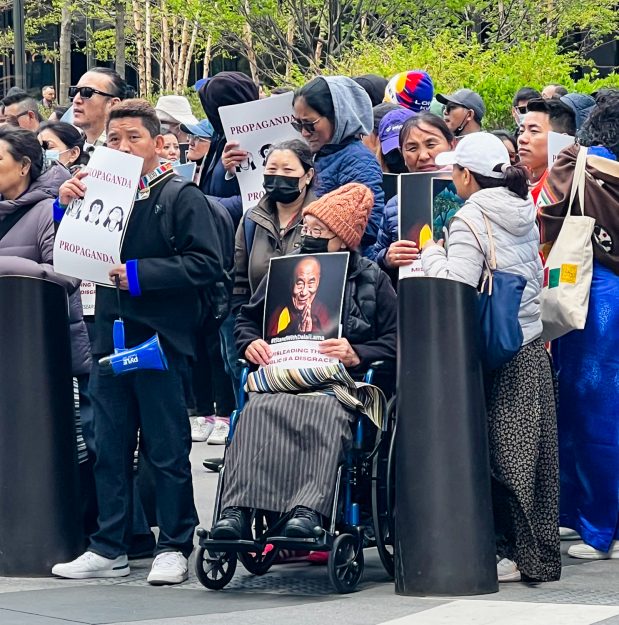
Thank you for subscribing to Tricycle! As a nonprofit, we depend on readers like you to keep Buddhist teachings and practices widely available.
